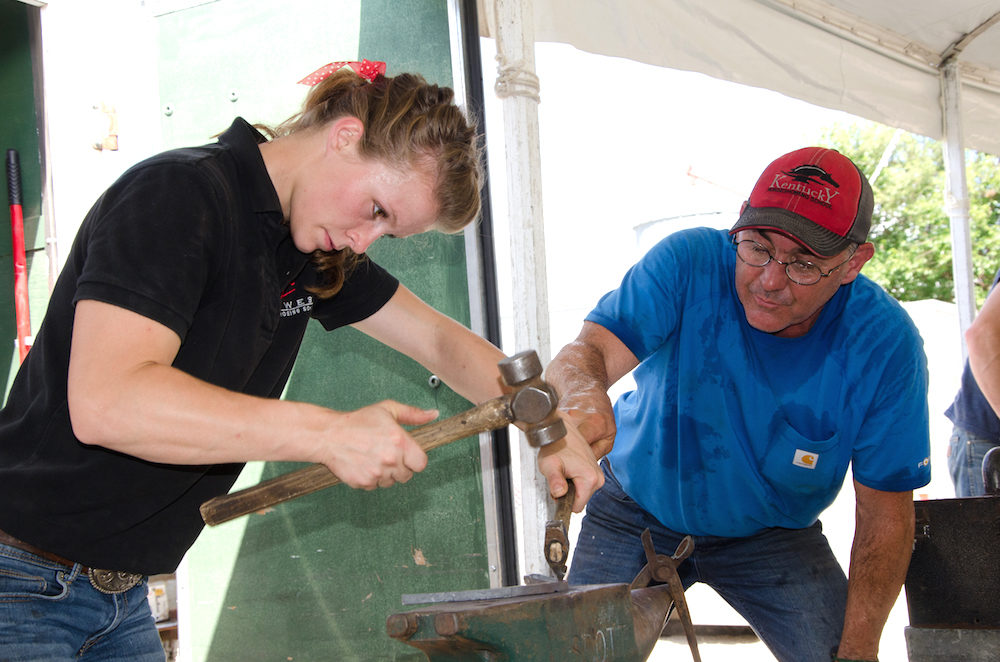Pictured Above: Hall Of Fame farrier Mitch Taylor instructs Jessica Byrne while forging a shoe at a Wisconsin clinic.
There are a number of attributes that help make a good apprentice. Among them are mastering the fundamentals of the trade, personal integrity, horsemanship and a desire to learn.
Master the fundamentals. A good apprentice has gained a standard of proficiency in the fundamentals of the trade. That’s why it’s important to go to a reputable farrier school. Students can learn much more when they understand farrier theory such as the anatomy and physiology of the distal limb, understand the relationship of conformation to movement and foot deformation, understand the concepts of shoes and the biomechanics of how to trim feet.
Personal integrity. Mentors can deal with students who are not very handy, as long as they possess a certain level of competence — hand-eye coordination and skill. That’s my job to get them up to speed. When I’ve talked to many mentors over the years, they prefer a high-quality, honest person over the best student who made the prettiest shoes, but did not have personal integrity. An apprentice needs to value their commitment to the mentor and respect the mentor’s commitment to their education.
Horsemanship. It’s important for a student to have a degree of horsemanship, so that he or she can get underneath the horses, keep them comfortable and not get them juiced up. Mentors have spent a lot of time getting these horses used to being shod. The last thing they need is a nervous apprentice jabbing them with a rasp because they haven’t learned how to listen to the horse when it’s telling them that it’s uncomfortable. It’s my job as a primary farrier instructor to develop these skills in a student.
Desire to learn. It’s important to have an earnest hunger to learn, be open-minded and willing to work hard. On the first day for every class, KHS instructors tell students, “You are starting on a lifetime of learning.” There might be times during the busy season when you have to work 7 days a week. The apprentice needs to suck it up and do it. In turn, it is the mentor’s responsibility to say, “OK, now we’re done with this show scene. Let’s all take some time and go fishing.”
For more tips for both apprentices and mentors, read “Benefit Your Practice By Understanding How To Help Apprentices Excel,” in the November issue of American Farriers Journal.









Post a comment
Report Abusive Comment